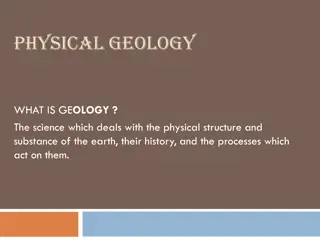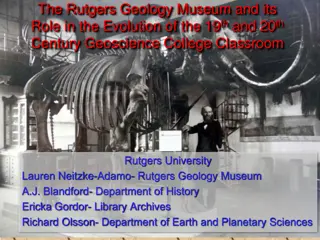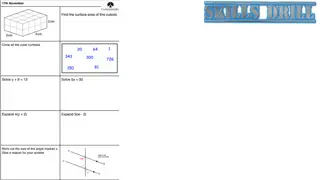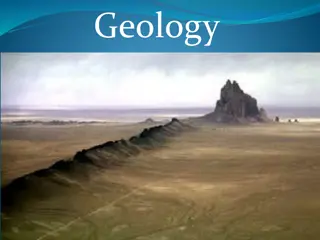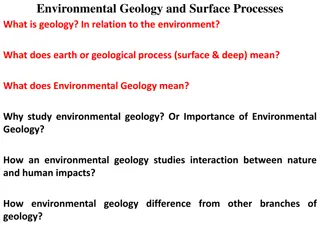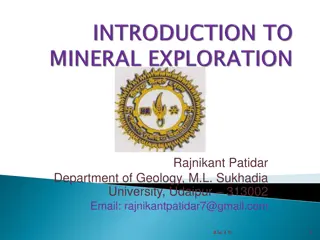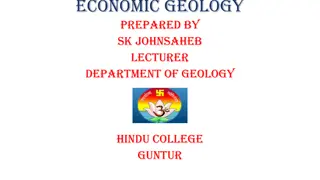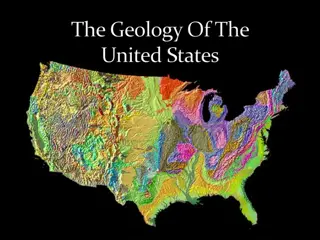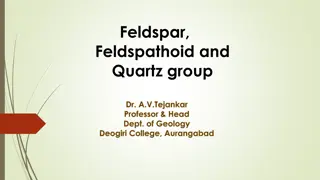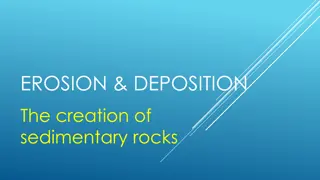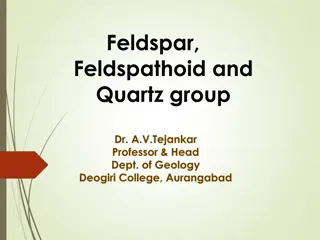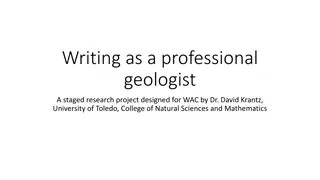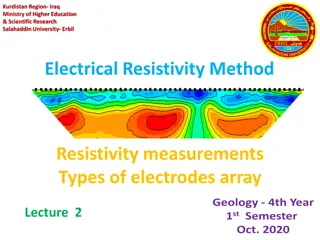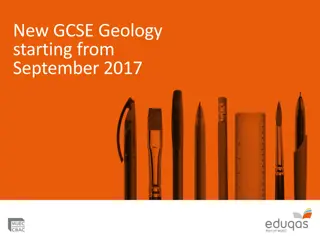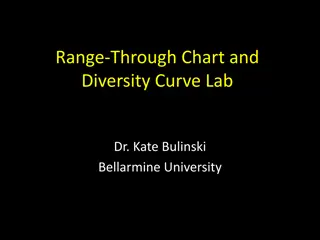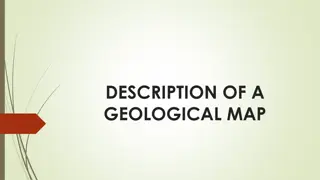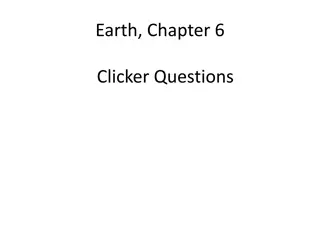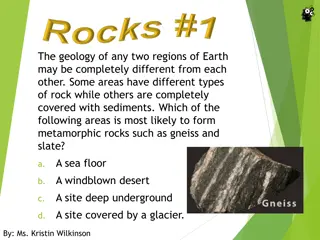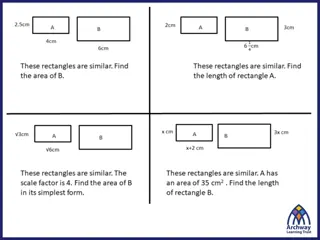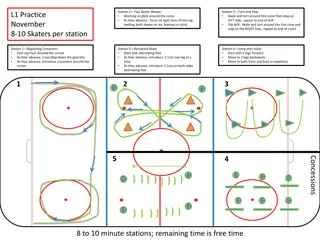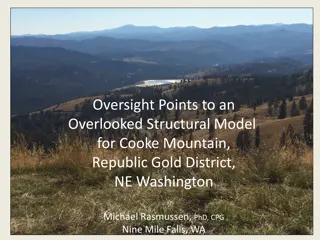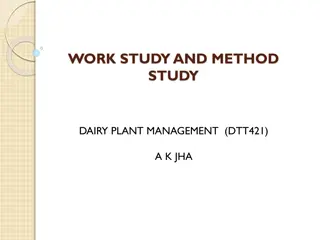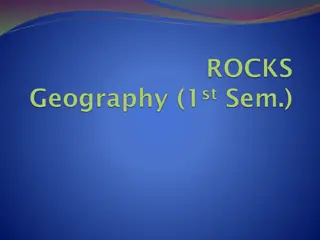Geology of Isidis Planitia: Study of Mascon and Cones
Study explores surface structures and geological history of Isidis Planitia on Mars within a large impact basin. Focus is on origin of cones and chains of cones to better understand Mars' regions. Utilizes analysis of surface structures and deep structures like mascon for insights.
Download Presentation

Please find below an Image/Link to download the presentation.
The content on the website is provided AS IS for your information and personal use only. It may not be sold, licensed, or shared on other websites without obtaining consent from the author. Download presentation by click this link. If you encounter any issues during the download, it is possible that the publisher has removed the file from their server.
E N D
Presentation Transcript
GEOLOGY OF ISIDIS PLANITIA BASED ON STUDY OF MASCON AND CHAINS OF CONES Leszek Czechowski1, Natalia Zalewska2, Jakub Ci ela2, Mateusz Kuzaj3 1.University of Warsaw, Faculty of Physics, Institute of Geophysics, ul. Pasteura 5, 02-093 Warszawa, Poland, lczech@op.pl. 2. Space Research Centre, Polish Academy of Sciences, ul. Bartycka 18A, 00-716 Warszawa, Poland 3.Wroclaw University of Science and Technology, Wybrze e Stanis awa Wyspia skiego 27, 50-370 Wroc aw, Poland 30 km
Introduction: We consider the surface structures and geological history of Isidis planitia on Mars. It is a plain located inside a large impact basin, of ~1500 km in diameter. Geologic history of Isidis Planitia is quite complicated and many details remain unclear. Our direct scope is determination of origin of cones and chains of cones. We believe that better analysis of surface structures and large deep structures (e.g. mascon) will allow a better understanding of the origin of Isidis and similar regions on Mars. 30 km
Isidis Planitia, a region of our study.It is a large impact basin with a mascon, covered by marine/glacial deposits. Topography based on MOLA, resolution is 128 pxs/deg. Contour lines are at 0.5 km interval. After Ivanov et al. 2012 Icarus org/10.1016/j.icarus.2011.11.029 Mare Imbrium, an analog of Isidis Planitia: a large impact basin with a mascon (NASA).
Mascon and magmatic/volcanic/tectonic activities Mars free-air gravity map produced along with the GMM-3 gravity solution (Red: gravity high; Blue: gravity low) (Credit: NASA's Scientific Visualization Studio) The process of mascon s formation are not fully understand. Anyway, it requires plume of dense plume from mantle (see model). It leads to magmatic/volcanic/tectonic activities. Below a scheme of gravity and density after Xaviertang, wikipedia)
Possible Isidis. only wavelength <100 km are shown. One can see curvilinear ridges which are not seen in the normal map (compare with the previous slide). The ridges separate the floor into basins (their kilometers across and tens of meters deep). After Ivanov et https://doi.org/10.1016/j.icarus.2011.11.029Similar curvilinear topography High-pass filtered topography, i.e. below deposits on size: tens of al. 2012 Icarus ridges found on Moon and Mars (NASA) 50 km 50 km 100 km
Problems and methods: Considereing thermal conditions after formation of basin and mascon: Mascon is an anomalously high mass concentration below the surface. its existence is an important source of information about past thermal conditions. 30 km Numerical models: we used two kinds of models. Large scale model of thermal processes. The model allows to determine thermal conditions and in the period when the mascon was formed. Small scale model of cone s Czechowski, L., et al. 2020. LPSC 2020 in The Woodlands, Tx). formation (compare Comparison of processes on different celestial bodies: Mars, Moon, Earth. Mars is a body of intermediate mass and size between Earth and the Moon. Cones ofdifferent origin are found on all these bodies. Differences and similarities are important! We take into account differences between physical conditions on Moon, Earth and Mars. Isidis mascon- Free -Air Gravity
Topography of Isidis basin with cone chains (white lines) and cone fields (yellow spots). After: R.Ghenta et al. (2012) https://doi.org/10.1016/j.icarus.2011.10.018
Chains of cones on Isidis Planitia A plain located inside a large impact basin of ~1500 km in diameter. Its age is ~3.8 Ga 1 km 2 km
HiRISE-based digital terrain model of a typical chain of cones in Isidis Planitia PSP_008887_1985, PSP_009177_1985 1 km K. Rotchimmel Institute of Aviation, Warsaw, Poland
500 m Generated 3D model of longitudinal cone with furrow Many of these chain have a characteristic furrow through the center, suggesting that fissure volcanism along circumferential dikes was common in the Isidis area. The cones are arranged in arcuated parallel chains in many places.
Separated cones with central calderas Connected cones with the characteristic furrow The separated cones have diameters of 300 500 m and heights of ~30 m. These imply slopes of 7 11 consistent with explosive type of volcanism. As a part of the Isidis area we study separated polygons with a characteristic pattern of cone chains. Each of the separated polygons has its own representative type of cone.
Holuhraun Iceland 29 Aug. 2014-27 Feb. 2015 S o Jorge-Azores Similar cones are known from Iceland (64 03 53 N 18 13 34 ). We recognize this type of volcanism on Lanzarote on Lanzarote (Canary Islands) and Sao Jorge (Azores). Whereas many dikes controlling the cones are situated in the rift zones, some are controlled by stress field of central volcanoes and these could be the best analogues for the Martian dikes and related volcanic cones. Prime examples of such dikes on Iceland are documented by Gudmundson et al. (2009). Laki Iceland 1783-1784
Possible interpretation of the stress distribution forming dikes under the Isidis crust Possible geometries of centrally-inclined sheet swarms resulting from internal excess magma pressure: A. radial planar sheets from a spherical magma chamber; B. concave-upward (bowl-shaped) sheets from a spherical magma chamber; C. concave-downward (trumpet-shaped) sheets from a sill-shaped magma chamber; and D. planar parallel sheets from a laccolith-like chamber. (Tibaldi 2015)
Possible cone formation proces on Isidis 10 km View of the western part of Isidis. The cone chains form a circular structure Model of a Venusian corona generated above the edge of a plume that has flattened at the base of the lithosphere showing a raised rim, a moat and an annulus of graben underlain by dykes (not to scale). Modified after Ernst and Buchan (1998). The dashed lower portion of circumferential dykes indicates the uncertainty in how magma propagates from the edge of the plume or magmatic underplate to reach the upper crust (Srivastava et al. 2019) This model can explain the formation of circular swarms of cones responsible for forming cones. Fig.ABC
Thank you for your attention References [1] Ivanov, M.A., et al. 2012, Icarus. https://doi.org/10.1016/j.icarus.2011.11.029 [2] Rickman, H., et al. Planetary and Space Science, 166, 70 89, 2019. [3] Czechowski, L., et al. 2020. Submitted for LPSC 2020 in The Woodlands, Tx. [4] Ghent R., Anderson S., Pithawala T.: The formation of small cones in Isidis Planitia, Mars through mobilization of pyroclastic surge deposits, Icarus, Vol. 217, pp. 169-183, 2012 [5] Guidat T. et al. Landform assemblage in Isidis Planitia, Mars: Evidence for a 3 Ga old polythermal ice sheet. Earth and Planetary Science Letters Vol. 411, 1 February 2015, Pages 253-267. 2015 [6] Gudmundsson A., Ruth A.: Mechanical interaction between active volcanoes in Iceland.: Geophysical Research Letters, Vol. 34 pp. L10310, 1-5, 2007 [7] Gudmundsson A. et.al, Effects of dyke emplacement and plate pull on mechanical interaction between volcanic systems and central volcanoes in Iceland. Special Publications of IAVCEI 2009 [8] Zalewska N.: Global Martian volcanism as a new interpretation of geological past of terrestrial bodies and moons in the Solar System, EPSC Abstracts, Vol. 11, EPSC2017-372, 2017 [9] Tibaldi A., Structure of volcano plumbing systems: A review of nmulti-parametric effects. Journal of Volcanology and Geothermal Research 298, 85 135, 2015


